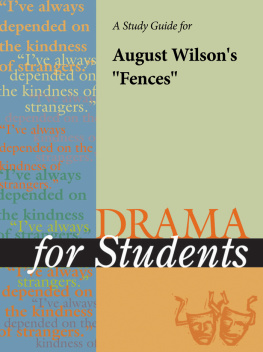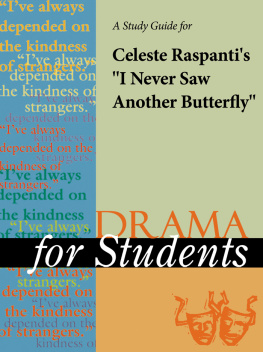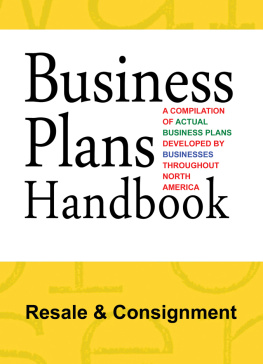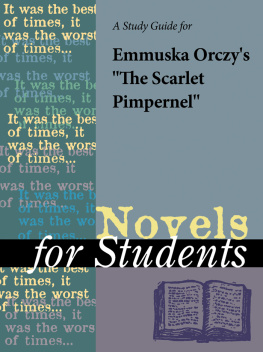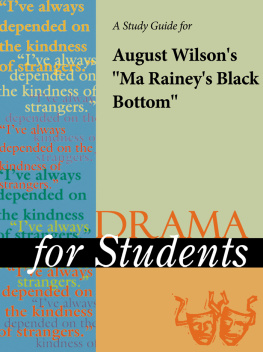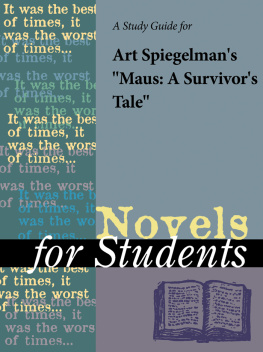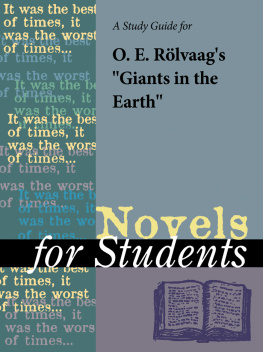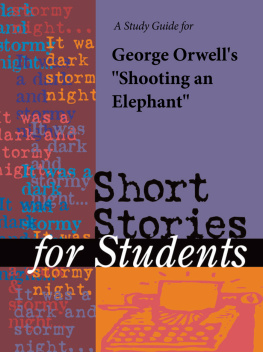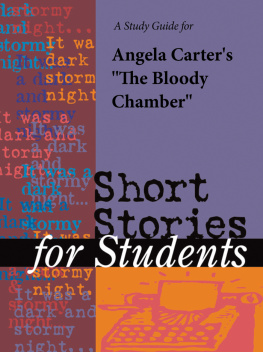Gale - A Study Guide for August Wilsons Fences
Here you can read online Gale - A Study Guide for August Wilsons Fences full text of the book (entire story) in english for free. Download pdf and epub, get meaning, cover and reviews about this ebook. year: 2015, publisher: Gale, Cengage Learning, genre: Detective and thriller. Description of the work, (preface) as well as reviews are available. Best literature library LitArk.com created for fans of good reading and offers a wide selection of genres:
Romance novel
Science fiction
Adventure
Detective
Science
History
Home and family
Prose
Art
Politics
Computer
Non-fiction
Religion
Business
Children
Humor
Choose a favorite category and find really read worthwhile books. Enjoy immersion in the world of imagination, feel the emotions of the characters or learn something new for yourself, make an fascinating discovery.
- Book:A Study Guide for August Wilsons Fences
- Author:
- Publisher:Gale, Cengage Learning
- Genre:
- Year:2015
- Rating:5 / 5
- Favourites:Add to favourites
- Your mark:
- 100
- 1
- 2
- 3
- 4
- 5
A Study Guide for August Wilsons Fences: summary, description and annotation
We offer to read an annotation, description, summary or preface (depends on what the author of the book "A Study Guide for August Wilsons Fences" wrote himself). If you haven't found the necessary information about the book — write in the comments, we will try to find it.
Gale: author's other books
Who wrote A Study Guide for August Wilsons Fences? Find out the surname, the name of the author of the book and a list of all author's works by series.
A Study Guide for August Wilsons Fences — read online for free the complete book (whole text) full work
Below is the text of the book, divided by pages. System saving the place of the last page read, allows you to conveniently read the book "A Study Guide for August Wilsons Fences" online for free, without having to search again every time where you left off. Put a bookmark, and you can go to the page where you finished reading at any time.
Font size:
Interval:
Bookmark:


Staff
Editorial: David M. Galens, Editor. Terry Browne, Christopher Busiel, Clare Cross, Tom Faulkner, John Fiero, David M. Galens, Carole Hamilton, Sheri Metzger, Daniel Moran, Terry Nienhuis, William P. Wiles, Joanne Woolway, Etta Worthington, Entry Writers. Elizabeth Cranston, Kathleen J. Edgar, Jennifer Gariepy, Dwayne D. Hayes, Kurt Kuban, Joshua Kondek, Tom Ligotti, Scot Peacock, Patti Tippett, Pam Zuber, Contributing Editors. James Draper, Managing Editor. Diane Telgen, For Students Line Coordinator. Jeffery Chapman, Programmer/Analyst.
Research: Victoria B. Cariappa, Research Team Manager. Andy Malonis, Barb McNeil, Research Specialists. Julia C. Daniel, Tamara C. Nott, Tracie A. Richardson, Cheryl L. Warnock, Research Associates. Phyllis P. Blackman, Jeffrey D. Daniels, Corrine A. Stocker, Research Assistants.
Permissions: Susan M. Trosky, Permissions Manager. Kimberly F. Smilay, Permissions Specialist. Steve Cusack and Kelly A. Quin, Permissions Associates.
Production: Mary Beth Trimper, Production Director. Evi Seoud, Assistant Production Manager. Shanna Heilveil, Production Assistant.
Graphic Services: Randy Bassett, Image Database Supervisor. Robert Duncan and Michael Logusz, Imaging Specialists. Pamela A. Reed, Photography Coordinator. Gary Leach, Macintosh Artist.
Product Design: Cynthia Baldwin, Product Design Manager. Cover Design: Michelle DiMercurio, Art Director. Page Design: Pamela A. E. Galbreath, Senior Art Director.
Copyright Notice
Since this page cannot legibly accommodate all copyright notices, the acknowledgments constitute an extension of the copyright notice.
While every effort has been made to secure permission to reprint material and to ensure the reliability of the information presented in this publication, Gale Research neither guarantees the accuracy of the data contained herein nor assumes any responsibility for errors, omissions, or discrepancies. Gale accepts no payment for listing; and inclusion in the publication of any organization, agency, institution, publication, service, or individual does not imply endorsement of the editors or publisher. Errors brought to the attention of the publisher and verified to the satisfaction of the publisher will be corrected in future editions.
This publication is a creative work fully protected by all applicable copyright laws, as well as by misappropriation, trade secret, unfair competition, and other applicable laws. The authors and editors of this work have added value to the underlying factual material herein through one or more of the following: unique and original selection, coordination, expression, arrangement, and classification of information. All rights to this publication will be vigorously defended.
Copyright 1998
Gale Research
835 Penobscot Building
645 Griswold
Detroit, MI 48226-4094
All right reserved including the right of reproduction in whole or in part in any form.
This book is printed on acid-free paper that meets the minimum requirements of American National Standard for Information SciencesPermanence Paper for Printed Library Materials, ANSI Z39.48-1984.
ISBN 0-7876-2752-6
ISSN 1094-9232
Printed in the United States of America
10 9 8 7 6 5 4 3 2

August Wilson
1983
The first staged reading of August Wilsons play Fences occurred in 1983 at the Eugene ONeill Theatre Centers National Playwrights Conference. Wilsons drama opened at the Yale Repertory Theatre in 1985 and on Broadway at the 46th Street Theatre in 1987. Fences was well-received, winning four Antionette (Tony) Perry Awards, including best play. The work also won the New York Drama Critics Circle Award, the Pulitzer Prize, and the John Gassner Outer Critics Circle Award. Wilson was also selected as Artist of the Year by the Chicago Tribune.
Fences was a huge success with both critics and viewers, and it drew black audiences to the theatre in much larger numbers than usual. Because the play had four years of pre-production development before it opened on Broadway, Wilson had a chance to tighten and revise the action, watching his characters mature into lifelike creations. James Earl Jones played the role of Troy in the first staging of Fences on Broadway. Jonesand many black audience membersrecognized and identified with Wilsons use of language to define his black characters. In an interview with Heather Henderson in Theater, Jones stated that Few writers can capture dialect as dialogue in a manner as interesting and accurate as Augusts.
Reviewers also noted Wilsons ability to create believable characters. In his review for Newsweek, Allan Wallach noted that it is the men who dominate the script and bring it to lifesingling out Jones, whom Wallach noted, is at his best in the bouts of drinking and bantering. It is Joness performance that creates a rich portrait of a man who scaled down his dreams to fit inside his run-down yard. Clive Barnes, writing for the New York Post, said that Wilson provides the strongest, most passionate American dramatic writing since Tennessee Williams (Cat on a Hot Tin Roof). Fences, said Barnes, gave me one of the richest experiences I have ever had in the theater.
August Wilson was born Frederick August Kittel, on April 27, 1945, in a ghetto area of Pittsburgh, Pennsylvania, known as The Hill. Wilsons white father, a German baker named August Kittel, abandoned the family when Wilson was a child. Wilsons mother, Daisy Wilson Kittel, worked as a cleaning woman to raise her six children. Later, after Wilsons mother had remarried, his stepfather moved the family to a white neighborhood where Wilson was subjected to unbridled racism. At age 15, Wilson dropped out of school after being falsely accused of plagiarism; after that episode, he continued his education on his own, with periods of extensive reading at the public library.
Wilson began his career writing poetry and short stories but switched to drama in 1978 when he was invited to write plays for a black theatre in Minneapolis-St. Paul. Several fellowships enabled Wilson to concentrate on writing plays as a fulltime venture. Although his early efforts, Fullerton Street (1980), Black Bart and the Sacred Hills (1981), and Jitney (1982) received little attention, he gained recognition with his 1984 play, Ma Raineys Black Bottom, which was accepted for a staged reading at the Eugene ONeill Theatre Centers National Playwrights Conference in 1982. The following year, Fences was also presented at the ONeill conference and in 1986 Joe Turners Come and Gone became Wilsons third play to be produced at the conference.
Each of these plays followed their initial readings at the ONeill with productions at the Yale Repertory Theatre and later stagings on Broadway. In 1987, The Piano Lesson opened at the Yale Repertory Theatre; Two Trains Running followed three years later. Wilsons
Font size:
Interval:
Bookmark:
Similar books «A Study Guide for August Wilsons Fences»
Look at similar books to A Study Guide for August Wilsons Fences. We have selected literature similar in name and meaning in the hope of providing readers with more options to find new, interesting, not yet read works.
Discussion, reviews of the book A Study Guide for August Wilsons Fences and just readers' own opinions. Leave your comments, write what you think about the work, its meaning or the main characters. Specify what exactly you liked and what you didn't like, and why you think so.

